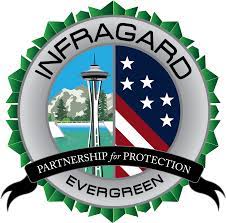The InfraGard Sector Chief Program-Washington (WA)
In addition to our elected board, we call on an advisory board of former board members and other critical infrastructure leaders to guide the chapter
Program Overview
The InfraGard Sector Chief Program was created to aid in the protection of the nation’s critical infrastructure by establishing a network of members with sector-specific expertise to facilitate timely information sharing between the FBI and the private sector. This exchange of information enhances the ability of the FBI and partnering federal agencies to address threats to the sixteen recognized sectors of our nation’s critical infrastructure.
Sector Chief Role
Sector Chiefs are expected to be the “tip of the spear” for InfraGard WA. They are leaders who provide the greatest value proposition to our chapter’s stakeholders for sector-specific expertise and service.
Sector Chief Qualifications and Responsibilities
- Motivated and active leaders within the InfraGard membership.
- Subject matter experts with comprehensive knowledge and experience in one of the 16 critical infrastructure sectors.
- Serve as ambassadors/spokespersons for InfraGard.
- Serve as the primary point of contact for collecting and sharing sector-specific information to assist the FBI and other law enforcement and emergency management agencies.
- Promote two-way information sharing and collaboration among sector members and across other sectors (regular meetings, etc.).
- Initiate training, exercises, and continuing education regularly.
- Build effective relationships within their sectors and with partner agencies and organizations.
- Provide tips, leads, and subject matter expertise to the FBI and other law enforcement authorities as needed.
Should we add something about critical infrastructure sectors? See example below.
Critical Infrastructure Sectors
“Critical infrastructure” refers to the systems and assets, whether physical or virtual, so vital to the United States that their incapacity or destruction would have a debilitating impact on security, national economic security, national public health or safety, or any combination of those matters. Presidential Policy Directive 21 (PPD-21): Critical Infrastructure Security and Resilience defines 16 critical infrastructure sectors:
- Chemical Sector: Includes basic chemicals, specialty chemicals, agricultural chemicals, pharmaceuticals, and consumer products.
- Communications Sector: Includes terrestrial, wireless, and satellite transmission systems.
- Dams Sector: Provides services related to hydroelectric power generation, municipal and industrial water supplies, agricultural irrigation, sediment and flood control, river navigation, industrial waste management, and recreation.
- Commercial Facilities Sector: Includes entertainment and media, gaming, lodging, outdoor events, public assembly, real estate, retail, and sports leagues.
- Critical Manufacturing Sector: This includes primary metal manufacturing, machine manufacturing, electrical equipment, appliance and component manufacturing, and transportation equipment manufacturing.
- Emergency Services Sector: Includes law enforcement, fire and emergency services, emergency management, emergency medical services, and public works.
- Financial Services Sector: Includes depository institutions, providers of various investment products, providers of risk transfer products, and other credit and financing organizations.
- Government Facilities Sector: Includes buildings owned or leased by federal, state, local, and tribal governments, education facilities, and national monuments and icons.
- Information Technology Sector: This includes hardware, software, and IT systems and services in collaboration with the Communications Sector.
- Transportation Systems Sector: Includes aviation, highway and motor carrier infrastructure, maritime transportation systems, mass transit and passenger rail, pipeline systems, freight rail, and postal and shipping.
- Defense Industrial Base Sector: Supports the defense and national security capabilities of the United States.
- Food and Agriculture Sector: Ensures the safety and security of the nation’s food supply and agricultural resources.
- Healthcare and Public Health Sector: Protects the population’s health and provides essential healthcare services.
- Nuclear Reactors, Materials, and Waste Sector: Includes nuclear power plants, nuclear materials, and waste management.
- Water and Wastewater Systems Sector: Ensures the provision of clean drinking water and wastewater treatment.
- Energy Sector: Includes electricity, oil, and natural gas production and distribution.

